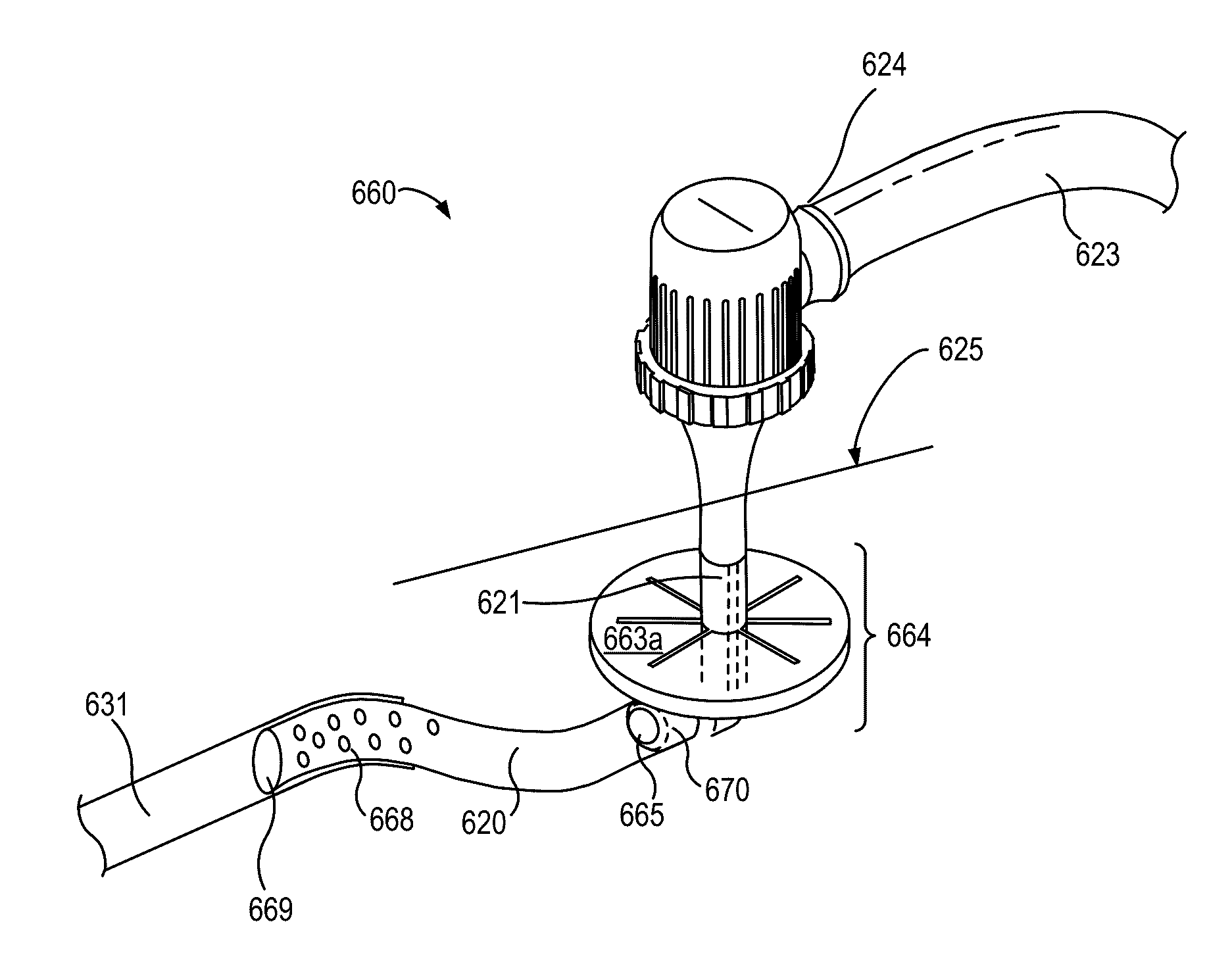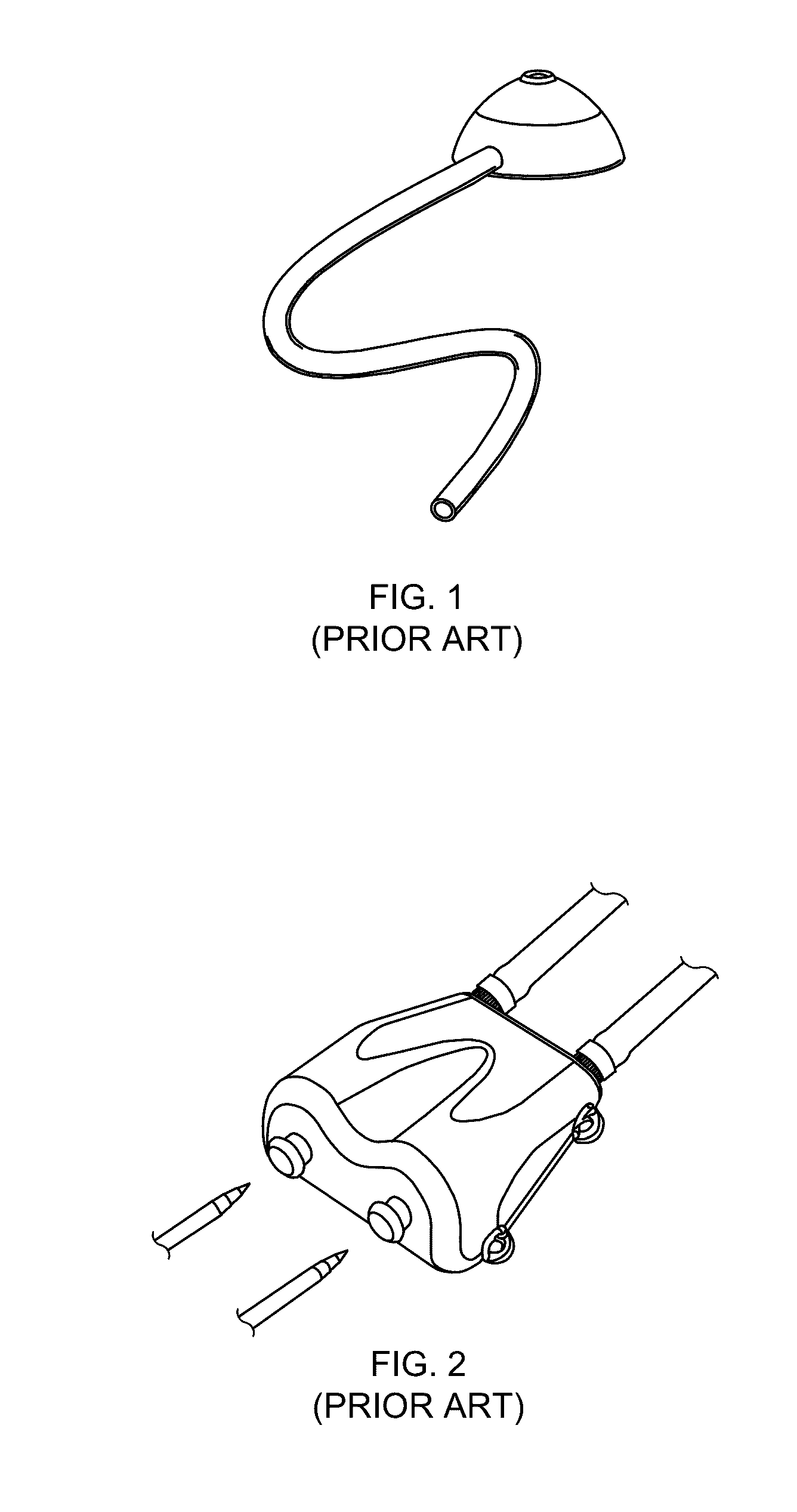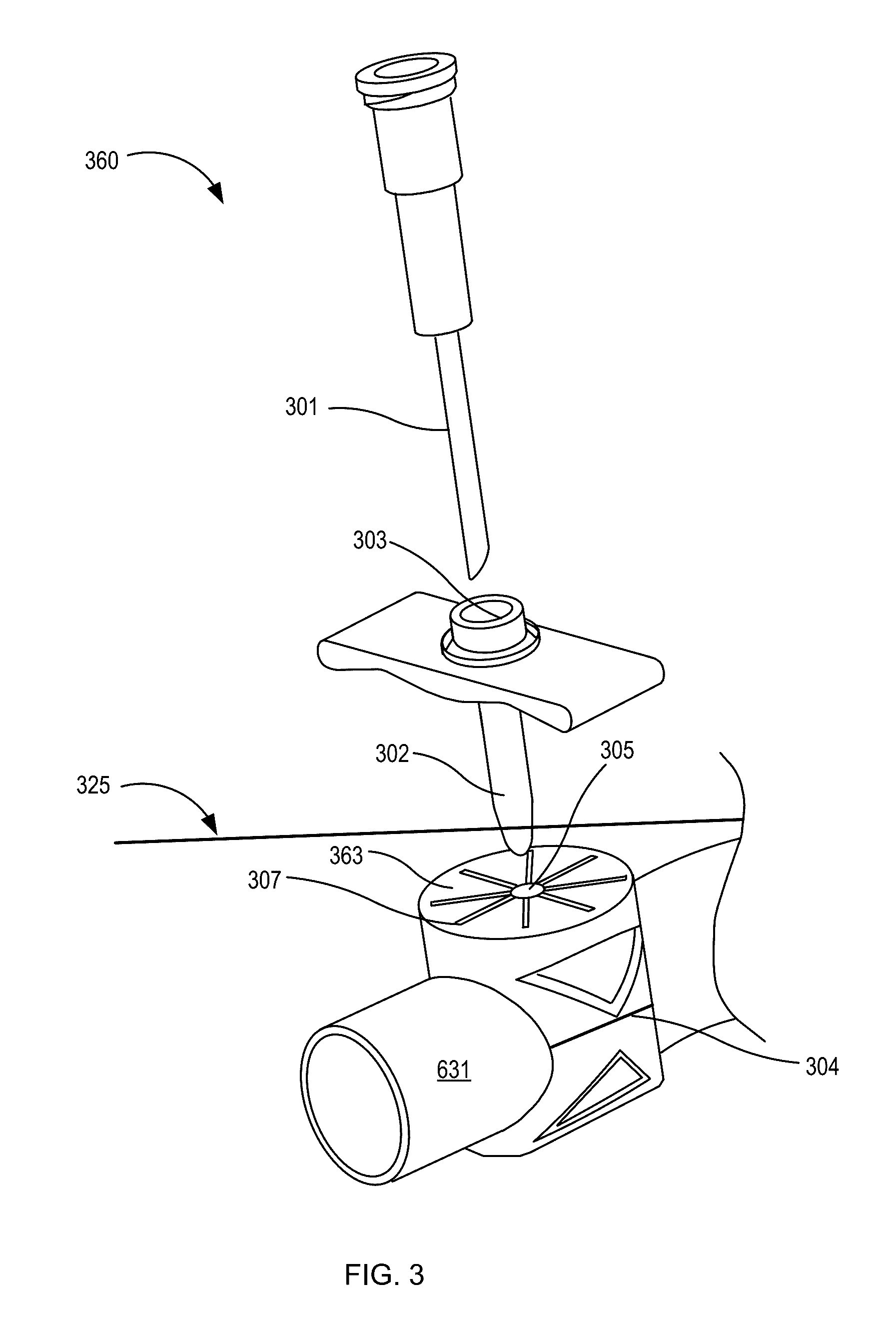Graft-port hemodialysis systems, devices, and methods
a technology of hemodialysis and grafts, applied in the field of medical devices, can solve the problems of increasing the blood flow during treatment, reducing the cross-sectional sealing area, and reducing the overall device size, so as to reduce the overall size of the implanted port, simplify the locking mechanism, and reduce the form factor of the port
- Summary
- Abstract
- Description
- Claims
- Application Information
AI Technical Summary
Benefits of technology
Problems solved by technology
Method used
Image
Examples
Embodiment Construction
[0103]FIG. 3 shows an implantable port device for establishing direct or indirect access to a blood vessel of a patient. The device is implanted beneath the patient's skin surface 325 and includes a tapered seat (FIGS. 4-5) configured to receive a tip of an access tube (i.e. needle 301 or trocar 302), the seat has a proximal portion, a distal portion, and a conical surface disposed between the proximal portion and the distal portion. The access tube (i.e. needle 301 or trocar 302) is inserted in the center of the flat surface 363 and into the tapered seat. The flat surface 363 is generally parallel with the skin surface when subcutaneously implanted. The device provides a low profile to facilitate relatively shallow subcutaneous placement. Unlike the domed geometry of some prior art devices such as FIG. 1, the flat (plateau-like) surface eases skin tension to prevent stretching and / or tearing of the skin. Insertion of the access tube into the tapered seat opens the conduit to physio...
PUM
| Property | Measurement | Unit |
|---|---|---|
| Angle | aaaaa | aaaaa |
| Angle | aaaaa | aaaaa |
| Angle | aaaaa | aaaaa |
Abstract
Description
Claims
Application Information
 Login to View More
Login to View More - R&D
- Intellectual Property
- Life Sciences
- Materials
- Tech Scout
- Unparalleled Data Quality
- Higher Quality Content
- 60% Fewer Hallucinations
Browse by: Latest US Patents, China's latest patents, Technical Efficacy Thesaurus, Application Domain, Technology Topic, Popular Technical Reports.
© 2025 PatSnap. All rights reserved.Legal|Privacy policy|Modern Slavery Act Transparency Statement|Sitemap|About US| Contact US: help@patsnap.com



